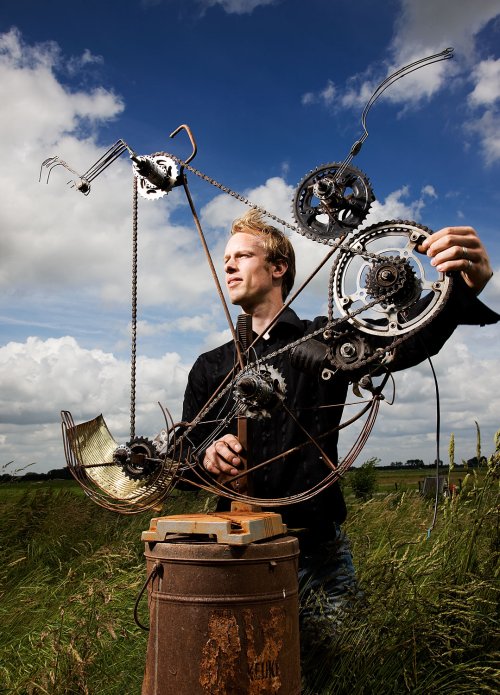Newsblog
Timeless sculpture
During the last month I have created a new large balanced sculpture, which I named 'Timeless'. The sculpture is based on my earlier sculpture No Time, however 20 times larger - almost 8 meters high - with some minor modifications.
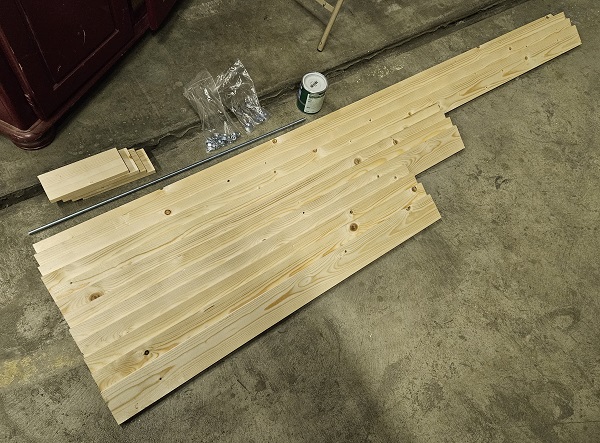
These are the materials that I used: wood, threaded steel rods with nuts and washers, and grey paint.
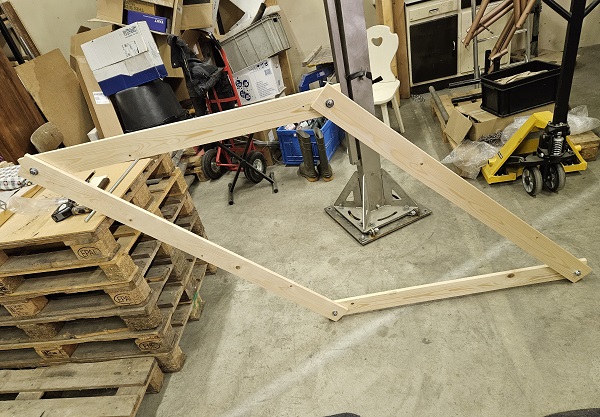
This is one of the two parallelograms assembled. Of a parallelogram the links of each pair of opposite links have equal lenght.

I made a steel frame to support the sculpture and added the two pillars of which the tallest is 4 meter high.
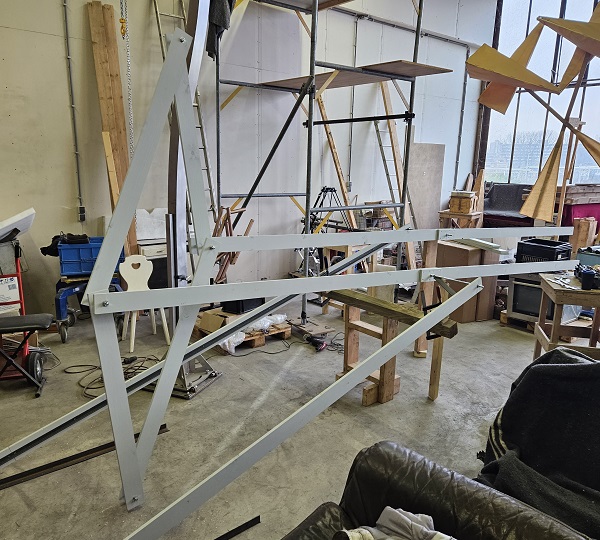
This is the assembly of the sculpture, placing the parallelograms on the long central links...

... and when placed upright, this is the final quite impressive result. At first I didn't realize how large it would become (the materials in the first photo do not suggest something so large) - my atelier is not even that high - however I love the monumental appearance. And because it is balanced, it can be easily moved by hand into any position.
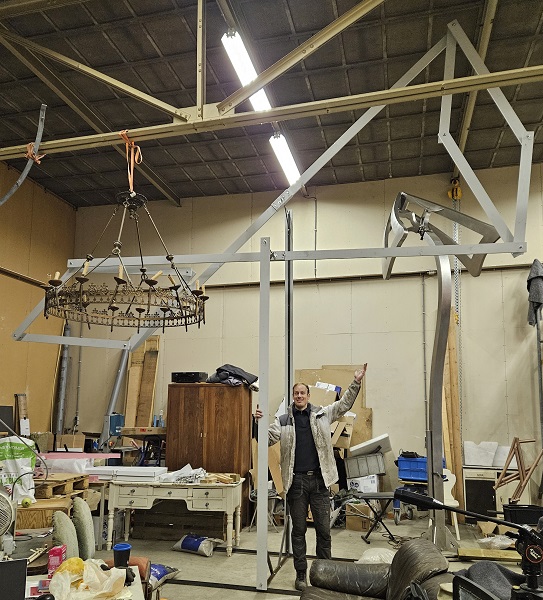
With respect to my earlier sculpture No Time, here the central rotational points are located above one another instead of next to one another and with one pillar in the front and one pillar in the back, the sculpture can move freely all around, which for this sculpture is more fascinating. The next step now is to make the sculpture of stainless steel.
Kunstroute Leiden
For the Kunstroute Leiden 2023 I was invited by Charlotte Icke-Lemmens to create an exhibition at the Alien Art Gallery in Leiden, shared with Vincent Icke. I was immediately very enthusiastic about their illuminated home and very pretty garden. I selected 8 sculptures, among which 6 that were for the first time publicly on display.

This photo shows an overview of the exhibition inside, with in the back the always successful sculpture Two Men Late at Night of 2005.
The sculpture Between Heaven and Earth of 2021 was placed centrally and the sculpture Hug of 2022 on the side.
I was especially pleased to notice how well the Hug sculpture was praised: "It is impressive that the cold and heavy material bronze is able to radiate so much sensitivity and warmth."

The new sculpture No Time of 2023 was placed on the wall near the entrance where many visitors could gather and move the balanced mechanism by hand.
Outside, the freshly finished Plumage I Flamingo of 2023 was placed in a colourful flowerbed with visitors moving it into a variety of poses ...

... while nearby the sculpture Freedom of 2023 was placed in a cosy open space in the grass.
To attract attention, the sculpture Between Heaven and Earth of 2011 I had placed in the front of the garden near the road, welcoming all visitors.
The last sculpture on display was 'The Three Cheerers', which was still work in progress and unfinished. The exhibition was an opportunity to test the sculpture and to try out the interactive actuation by the visitor.
Renewing the Plumage I sculpture
The Plumage I sculpture from 2012 came back from a museum in the UK many years ago, completely destroyed unfortunately as they had roughly disassembled the sculpture by using a hand grinder. Terrible! I still had the old parts in my storage and suddenly I got excited to see if I could bring the sculpture back to life and if it still would be balanced.
Fortunately all the important parts where still there and after making some new axles, the sculpture could be reassembled and...... to my utmost surprise: still works perfectly, moving very smoothly and still very well balanced!

Here some images of the grinder damage, and I suspect also some hammering as I had to make the steel straight again

I filled the damaged parts by welding

and then restored the shape by grinding


This is the fully restored sculpture. I had to make a new pillar and decided to make the sculpture a little higher than the version of 2012, since that makes it even more impressive.

Also the rust I do no longer like for this sculpture and I decided to paint it.... pink! The sculpture will now continue as the 'Plumage I Flamingo'.

'No Time' finished
The sculpture with the composition of two parallelograms has been finished. Here you see the final assembly of the polished stainless steel links with the rotational pins.



For the background I made a disc of 40 cm diameter with a black color for a nice contrast with the shiny stainless steel. This photo shows 9 of the beautiful possible poses into which you can move the sculpture by hand.

Continue blog >>

